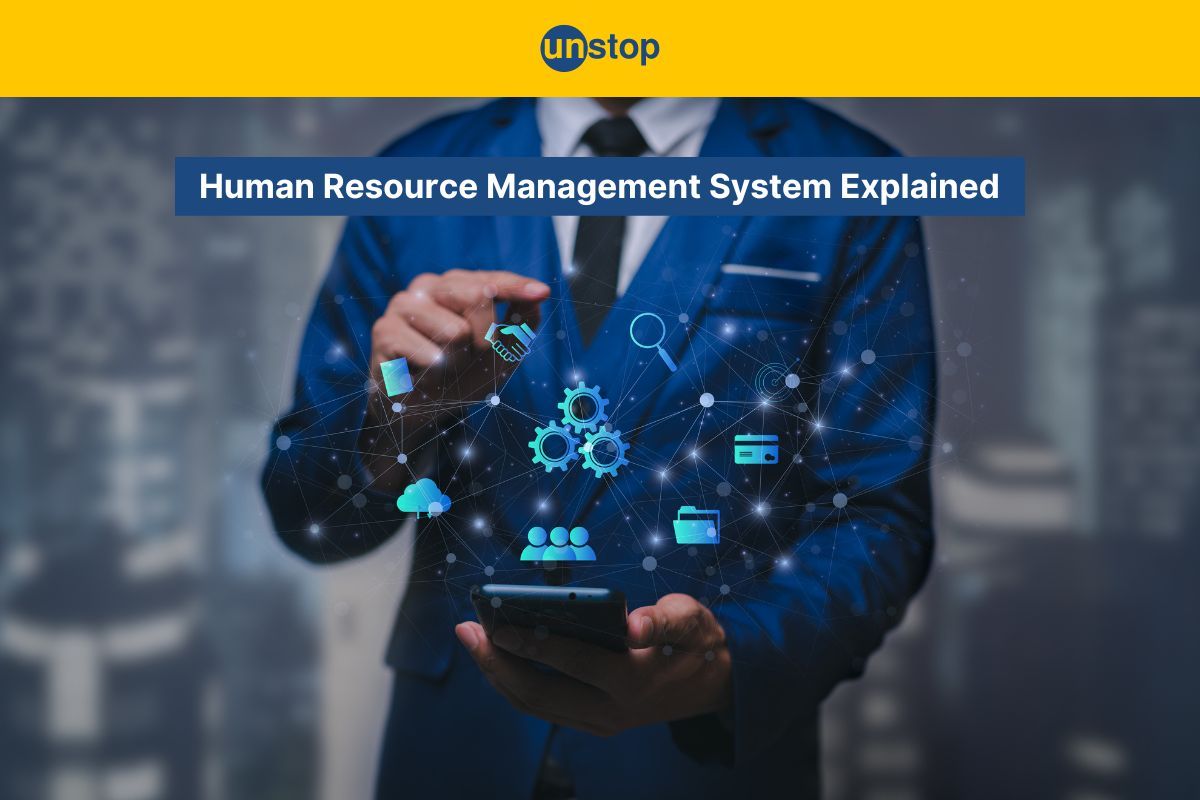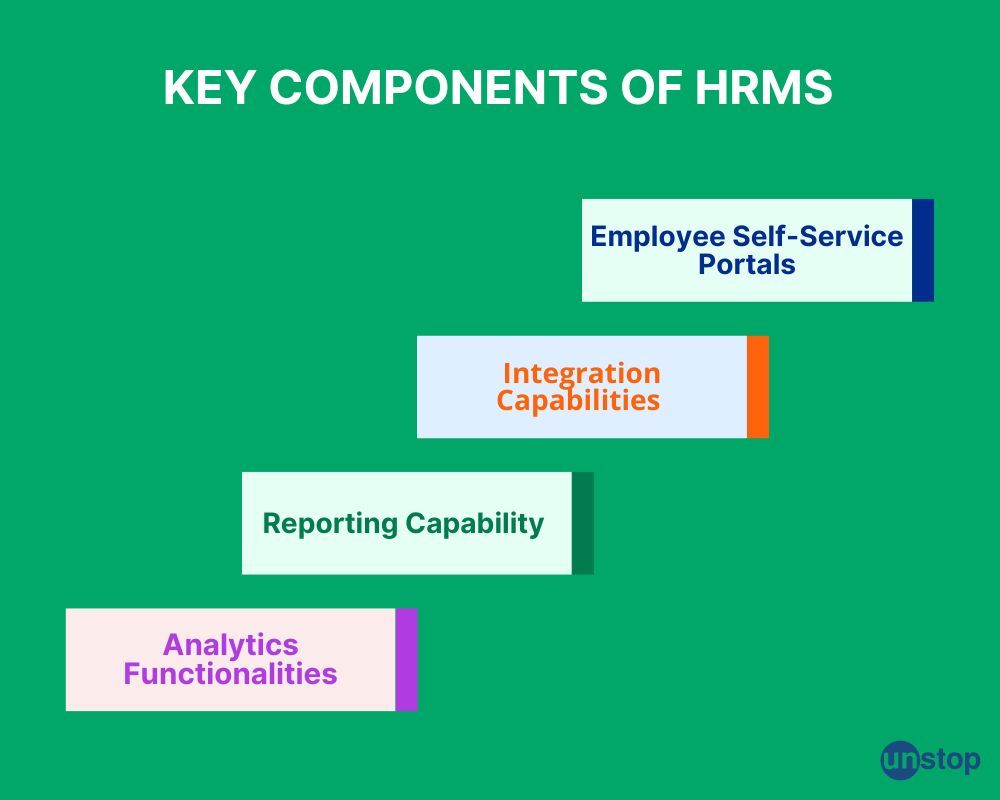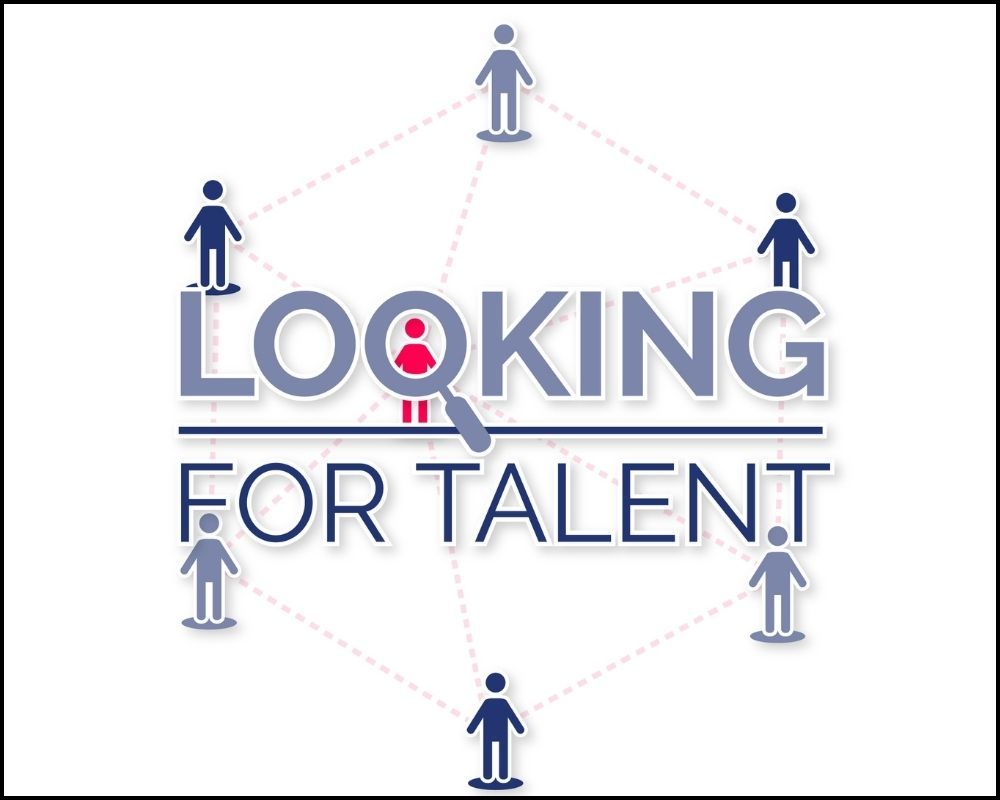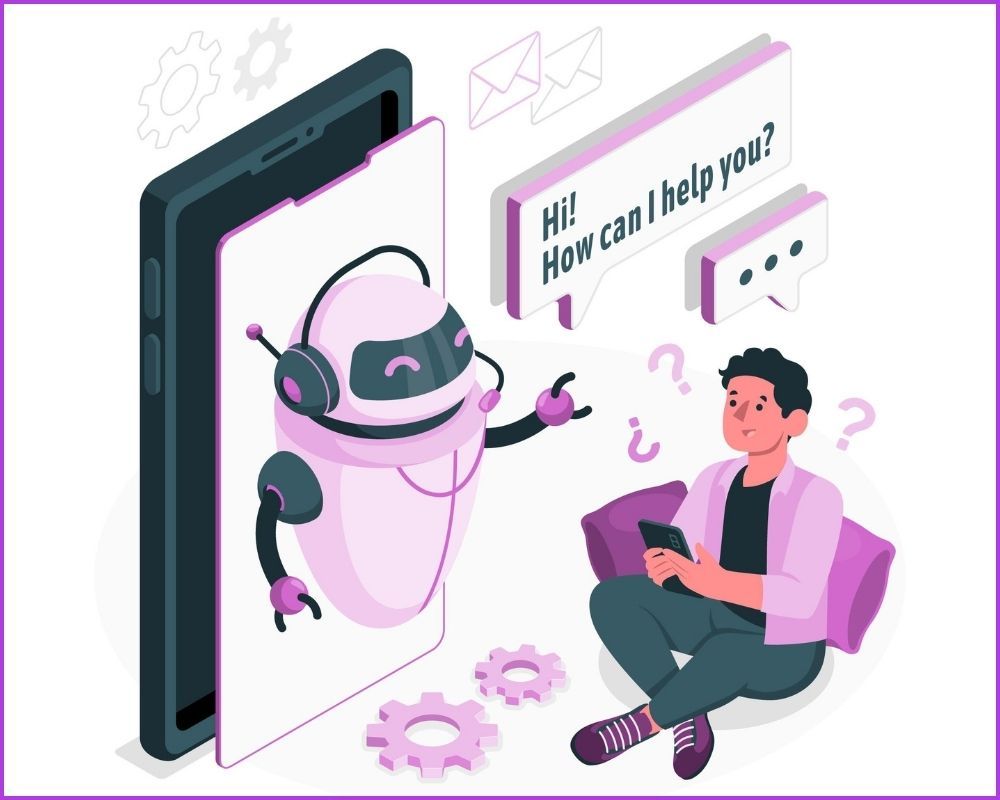- What is Human Resource Management (HRM)?
- Importance of HRM in an Organization
- What are the key Objectives of HRM?
- What are the main functions of HRM?
- Scope of HRM in an Organization
- Role Of HRM in an Organization
- Technology Integration & Future Trends in HRM
- Career Paths In Human Resource Management
- Conclusion
- Frequently Asked Questions (FAQs)
- Simulation Training: Understanding the Concept
- Evolution of Training Methodologies
- Benefits of Simulation Training
- Implementing Simulation Training in Organizations
- Future Simulation Training Trends
- Summing Up
- Frequently Asked Questions
- What do you mean by Performance Appraisal?
- Purpose & Objective of Performance Appraisal
- Types of Performance Appraisal
- Methods of Performance Appraisal: Benefits & Drawbacks
- Understanding the Working of Performance Appraisal
- Benefits of Performance Appraisal with Examples
- Criticisms & Limitations Of Performance Appraisal
- Conclusion
- Frequently Asked Questions (FAQ)
- Job Analysis: Definition & Importance
- Job Analysis: Key Components
- Identifying The Right Moment For Job Analysis
- Navigating Job Analysis Process
- Distinguishing Job Analysis & Evaluation
- Using The Findings Of Job Analysis
- Conclusion
- Frequently Asked Questions (FAQs)
- Deciphering Training & Development
- Difference Between Training, Development & Learning
- Significance Of Training & Development In HRM
- Benefits Of Training & Development For Organizations
- Types & Methods Of Employee Training
- Building Blocks Of Training Programs
- Trends & Innovation In Employee Training
- Strategic Integration With Talent Management
- Addressing Challenges In Training & Development
- Frequently Asked Questions (FAQs)
- Understanding Strategic Human Resource Management
- Scope Of Strategic Human Resource Management
- Creating A Strategic HR Plan In 7 Steps
- Different Approaches To Strategic Human Resource Management
- Importance Of Strategic Human Resource Management
- Characteristics Of Strategic Human Resource Management
- Frequently Asked Questions (FAQs)
- What is Selection Procedure in HRM?
- Stages Of Selection Procedure In HRM
- Making Informed Decisions With Job Offers
- Onboarding Strategies For New Hires
- Best Practices In Selection Procedure
- Conclusion
- Frequently Asked Questions (FAQs)
- Definition Of Human Resource Planning
- Understanding The Essence Of Human Resource Planning
- Key Objectives & Importance Of Human Resource Planning
- Strategic Alignment Of Human Resource Planning
- Core Steps Involved In Human Resource Planning Process
- Analyzing Labor Market Dynamics
- Tools & Techniques For Human Resource Planning
- Common Challenges & Solutions In Human Resource Planning
- Future Trends Influencing Human Resource Planning
- Measuring Success & Progress In Human Resource Planning
- Frequently Asked Questions (FAQs)
- Concept & Purpose Of Job Evaluation
- Overview Of Job Evaluation Methods
- Importance Of Implementing A Job Evaluation System
- Steps To Conduct A Thorough Job Evaluation
- Selecting Appropriate Method For Job Evaluation
- Establishing Job Evaluation Committee
- Advantages & Limitations Of Job Evaluation Techniques
- Maintaining & Updating Job Evaluation Process
- Frequently Asked Questions (FAQs)
- What is Training Needs Analysis?
- Purpose of Training Needs Analysis
- What are the Types of Training Needs Analysis?
- 7 Key Steps to Conduct Training Needs Analysis
- Methods of Data Collection for TNA
- What are the Benefits of Training Needs Analysis?
- Conclusion
- Frequently Asked Questions (FAQ)
- Types of Training Methods
- On-the-Job Training Methods (Learning by Doing)
- Off-the-Job Training Methods (Structured Learning)
- Microlearning & Mobile Learning
- Peer-to-Peer & Self-Directed Learning
- Choosing The Right Method
- Traditional Vs Modern Training Techniques
- Evaluating The Different Types Of Training Methods
- The Future of Training
- Conclusion
- Frequently Asked Questions (FAQs)
- What is Job Design in HRM?
- Methods of Job Design: Key Strategies
- The Impact of Taylorism on Job Design
- Hackman and Oldham Model or the Job Characteristics Model
- Socio-Technical Systems and Job Design
- The Job Design Process: Best Practices
- Things to Keep in Mind for an Effective Job Design Process
- Conclusion
- Frequently Asked Questions (FAQs)
- What is Training?
- What is Development?
- Core Differences Between Training and Development
- Similarities Between Training and Development
- Why This Difference Matters: Strategic Implications
- Importance of Training and Development
- Common Pitfalls of Confusing Training and Development
- Integrating Training and Development for Holistic Growth
- Frequently Asked Questions (FAQs)
- Key Challenges in Human Resource Management
- Addressing HRM Challenges Globally
- Legal and Regulatory Compliance in HRM
- Enhancing Productivity in HRM
- HRM Challenges in India
- Strategic Role of HR Leaders
- Technological Advancements in HRM
- Diversity and Inclusion in the Workplace
- Conclusion
- Frequently Asked Questions
- What do You Mean by Sources of Recruitment?
- Internal Sources of Recruitment
- Advantages & Disadvantages of Internal Sources of Recruitment
- External Sources of Recruitment
- Advantages & Disadvantages of External Sources of Recruitment
- Key Differences Between Internal & External Sources of Recruitment
- Innovative Recruitment Channels in the Digital Era
- Conclusion
- Frequently Asked Questions
- Want to Source Right & Optimize Your Recruitment Process?
- What is Human Capital?
- Human Capital Theory Explained
- Human Capital and Economic Growth
- Measuring Human Capital
- Human Capital Formation
- Human Capital Management Strategies
- Role of Education in Human Capital Formation
- Critiques of Human Capital Theories
- Future of Human Capital in Business
- Conclusion
- Frequently Asked Questions
- What is Wage?
- Types of Wages
- What is Minimum Wage?
- What is EPF Wage?
- What is the Differential Wage Rate?
- What is Real Wage?
- What is a Living Wage?
- Theories of Wages
- Factors That Affect Wages
- How Are Wages Calculated? (Formula to Calculate Wage)
- Key Differences Between Wages Vs. Salary
- Conclusion
- Frequently Asked Questions (FAQs)
- Definition Of Training Evaluation
- Understanding Training Evaluation Models
- Different Types Of Training Evaluation Methods
- Importance & Benefits Of Training Evaluation
- Formative Vs Summative Training Evaluation
- Creating An Effective Training Evaluation In Simple Steps
- Strategies For Employee Training Evaluation
- CIPP & Kaufman's Models In Training Evaluation
- Measuring & Analyzing Training Outcomes
- Best Practices For Conducting Training Evaluation
- Frequently Asked Questions (FAQs)
- What is Wage and Salary Administration in HRM?
- Importance of Wage and Salary Administration
- Objectives Of Wage & Salary Administration
- Principles Of Wage & Salary Administration
- Factors Influencing Wage & Salary Levels
- Frequently Asked Questions (FAQ)
- Meaning Of HR Professional
- Role Of An HR Professional
- Essential Skills Of Successful HR Professionals
- Effective Communication In HR Professionals
- Decision-Making & Problem-Solving In HR Professionals
- Frequently Asked Questions (FAQs)
- Definition & Evolution Of HRMS
- Understanding The Core Functionalities Of HRMS
- Key Features & Components Of HRMS
- Benefits & Importance Of Implementing HRMS
- Security Measures & Data Protection In HRMS
- Role Of Artificial Intelligence In HRMS
- Choosing The Right HRMS For Your Organization
- Frequently Asked Questions (FAQs)
- Definition Of Job Characteristics Model
- Hackman And Oldham Job Characteristics Model
- Five Core Job Characteristics Model Explained
- Psychological States & Work Outcomes in JCM
- Autonomy & Role In Job Satisfaction
- Task Significance
- Impact Of Feedback On Job Performance
- Factors Influencing The JCM's Effectiveness
- Practical Implications For SEO Content Writing
- Frequently Asked Questions (FAQs)
- Definition Of Executive Compensation
- Basics Of Executive Compensation
- Key Components Of Executive Compensation
- Purpose Of Compensation Packages
- Role Of Executive Compensation
- Types & Structures Of Executive Compensation Plan
- Short, Medium & Long-Term Compensation
- Trends & Regulations
- Best Practices For Executive Compensation
- Corporate Strategy & Governance
- Controversies & Criticisms
- Frequently Asked Questions (FAQs)
- Defining Employee Relations
- Importance Of Employee Relations Management
- Strategies For Effective Employee Relations
- Role Of An Employee Relations Specialist
- Resolving Workplace Disputes & Conflicts
- Addressing Wage Concerns & Policy Clarification
- Legal Compliance & Employee Relations Management
- Frequently Asked Questions (FAQs)
- What is International Human Resource Management?
- Objectives of International HRM
- Functions of International HRM
- Models of International HRM
- Strategies For Effective IHRM Implementation
- Key Differences Between IHRM and Domestic HRM
- Challenges in International HRM
- Frequently Asked Questions (FAQs)
- Importance Of Executive Development In HRM
- Methods Of Executive Development
- Objectives Of Executive Development
- Importance & Benefits Of Individualized Development Programs
- Frequently Asked Questions (FAQs)
- Defining Personnel Management & Objectives
- Key Functions Of Personnel Management
- Roles & Duties Of A Personnel Manager
- Personnel Management Vs. HRM
- Approaches & Policies In Personnel Management
- Manpower Planning, Recruitment & Selection Processes
- Training & Development Within Personnel Management
- Analysing Current Trends In Personnel Management
- Frequently Asked Questions (FAQs)
- What do you mean by Job Evaluation?
- What Are the Importance of Job Evaluation Methods?
- Best 7 Job Evaluation Methods in HRM
- Role Of Market Pricing In Job Evaluation
- Advantages & Disadvantages Of Job Evaluation Methods
- Career Progression, Legal Considerations & Compliance
- Best Practices For Job Evaluations
- Conclusion
- Frequently Asked Questions (FAQs)
- What is Personnel Management (PM)?
- What is Human Resource Management (HRM)?
- Similarities Between Personnel Management & HR Management
- Elaboration on Key Evolutionary Shifts
- Emerging Trends in Modern Human Resource Management
- Frequently Asked Questions (FAQs)
- Introduction to Kirkpatrick Model
- Origin & Evolution of the Kirkpatrick Model
- Importance of the Kirkpatrick Model
- Implementing the Kirkpatrick Model Training Evaluation
- Measuring Reaction: The First Level of Evaluation
- Assessing Learning: The Second Level Explained
- Evaluating Behavior Change: The Third Level of Impact
- Analyzing Results: The Fourth Level of Training Effectiveness
- Balancing Limitations in the Kirkpatrick Model
- Final Remarks
- Frequently Asked Questions (FAQs)
- Exploring The Concept Of Salary
- Key Differences Between Wages And Salary
- Types Of Wages & Their Impact on Earnings
- Varieties Of Salary Structures
- Advantages Of Earning Wages
- Benefits Of Receiving A Salary
- Legal Distinctions In Wage & Salary
- Overtime Compensation In Wage & Salary
- Frequently Asked Questions (FAQs)
- Fringe Benefits Meaning & Objectives
- Examples & Types Of Fringe Benefits
- Necessity Of Fringe Benefits By Law
- Tax Implications For Various Fringe Benefits
- Valuing & Calculating Fringe Benefits
- Role Of Cafeteria Plans In Fringe Benefits
- Impact Of Fringe Benefits On Employees
- Business Impact Of Fringe Benefits
- Considerations In Offering Fringe Benefits
- Conclusion
- Frequently Asked Questions (FAQs)
- What Is HR Compliance & Importance
- Key Elements Of An HR Compliance Checklist
- Managing HR Compliance In The Workplace
- Conducting An Effective HR Compliance Audit
- Overcoming Challenges In HR Compliance
- Automation For Streamlined HR Compliance
- Best Practices For Enforcing HR Compliance
- Long-term Data Governance In HR Compliance
- Frequently Asked Questions (FAQs)
- What is Recruitment Process In HRM?
- 5 Essential Stages of Recruitment & Selection Process
- Identifying Vacancies & Crafting Effective Job Descriptions
- Job Portals, Social Media & Technology in Recruitment
- Internal Vs External Sources of Recruitment
- Strategies for effective Recruitment in HRM
- Psychometric Tests used in Recruitment
- Conclusion
- Frequently Asked Questions (FAQs)
Why Use Human Resource Management System | Features & Benefits

A good Human Resource Management System (HRMS) is crucial for businesses to effectively manage their employees. This program makes HR duties easier by managing payroll, tracking attendance, evaluating performance, and handling recruitment processes.
Definition & Evolution Of HRMS
An HRMS is a software tool that simplifies the management of human resources, business operations, and information by integrating different processes and systems.
It helps in improving efficiency, reducing manual work, and compliance with labor laws and regulations. It also provides valuable insights and data for making informed decisions regarding workforce management systems.
Shift To Digital Solutions
HRMS has seen a significant shift from traditional HR processes to digital solutions. In the past, HR staff had to manually handle tasks such as payroll, leave management, and employee records. However, with the advent of technology, these processes have become more streamlined and efficient.
For example, rather than keeping paper records for every staff member, all information can be saved electronically in a safe database that authorized employees can access.
This transition has not only reduced the administrative burden on HR teams but has also improved accuracy and compliance with regulations.
Moreover, digital solutions have enhanced accessibility for employees who can now easily access their information or request leaves through self-service portals.
Impact Of Technological Advancements
The way human resource management works has changed a lot because of new technology. HR managers can now use things like predictive analytics and artificial intelligence for better and more effective decisions.
These tools let them look at real-time data and make choices based on that instead of just looking at what's happened in the past.
Understanding The Core Functionalities Of HRMS
Let us study some of the core functionalities of HRMS:
Streamlining Employee Data Management
A Human Resource Management System makes it easier to handle employee information by keeping all important details in one place. This includes things like personal information, contact details, job responsibilities, and performance reviews.
With HRMS, managers can easily access and update employee records as needed. For example, when an employee receives a promotion or changes their address, these updates are efficiently reflected across the entire system.
HRMS also facilitates seamless communication between different departments within an organization. When a new hire joins the company, their information is promptly entered into the system.
Consequently, this ensures that various teams, such as IT for systems access and payroll for salary processing, have immediate access to the new employee's details.
Automating Payroll & Benefits Administration
One of the key functionalities of a Human Resource Management System is automating payroll and benefits administration processes.
Instead of manually calculating salaries or tracking leave balances on spreadsheets, HRMS software automatically handles these tasks based on predefined rules and regulations.
For instance, if an organization offers different types of benefits, such as health insurance or retirement plans, to its employees based on specific criteria like tenure or position level, HRMS can accurately manage these entitlements without human intervention.
This automation not only reduces errors but also saves significant time for HR professionals who would otherwise spend hours performing these calculations manually.
Importance Of Performance Management Within HRMS
Performance management is vital within HRMS because it allows organizations to effectively evaluate employee productivity and contributions over time.
By using this feature within HRMS software, companies can set clear objectives for employees at both individual and team levels while continuously monitoring progress toward those goals.
This feature helps managers to regularly review employee performance using documented evidence from the entire year rather than just relying on memory or recent events during annual evaluations.
Key Features & Components Of HRMS
Let us study some of the key features and components of HRMS:

Employee Self-Service Portals
One important aspect of a Human Resource Management System is the self-service portal for employees. This feature enables workers to view and handle their personal details, benefits, requests for time off, and payment records independently.
With this tool, employees can update their contact details, view company policies, and enroll in training programs without needing direct assistance from HR personnel.
The staff can use the employee self-service portal to do their own administrative tasks, like asking for time off. This means they don't have to use paper or email to talk to HR about it.
Another advantage of this feature is that it enhances transparency within the organization by providing employees with easy access to important documents such as company handbooks or performance evaluations.
Integration Capabilities
Contemporary HRMS platforms are made to smoothly connect with other company systems like payroll software, accounting programs, and customer relationship management (CRM) tools.
This integration capability ensures that data flows smoothly between different departments within an organization.
Integration capabilities allow businesses to improve teamwork and decision-making by breaking down data silos and promoting collaboration among different departments. This helps teams work together more effectively and makes decision-making processes smoother.
This leads to improved operational efficiency and more accurate decision-making processes.
Reporting & Analytics Functionalities
Modern Human Resource Management System platforms offer strong reporting and analytics capabilities, which enable HR professionals to create detailed reports on different workforce management areas such as attendance, performance evaluations, turnover rates, and training impact.
Analysis tools can provide companies with valuable insights into employee engagement, employee retention rates, and productivity levels.
For example, a business might use these tools to figure out which departments need more training based on how well their employees are doing, as shown in the HRMS system.
Also, making reports that are made for the specific needs of the company gives decision-makers useful information for planning and making decisions.
Benefits & Importance Of Implementing HRMS
Let us study some of the important benefits of implementing HRMS:
Efficiency Gains
Implementing an HRMS results in big efficiency improvements through automation and centralization. By automating repetitive tasks like processing payroll, managing leave, and evaluating performance, companies can make their operations more efficient.
This not only saves time but also reduces the chance of errors in these important processes. Also, with all employee data in one place, HR professionals can quickly and easily access information.
Impact On Employee Satisfaction & Engagement
Utilizing a Human Resource Management System has a big impact on how happy and involved employees are. Most modern HRMS platforms have self-service features that let employees easily access their records, like pay stubs and training materials, without needing help from the HR department.
This helps employees feel like they have more say in how they can grow in their careers at the company.
It also makes things more transparent because employees can track their progress and not feel like they're being kept in the dark about important work stuff. An HRMS also lets companies give employees tools for setting goals, getting feedback, and scheduling performance reviews.
This helps keep employees engaged in planning their careers while also making sure their goals match up with the company's goals.
Cost Savings
One of the key advantages associated with implementing an HRMS is cost savings. The automation capabilities reduce manual workloads, which translates into reduced labor costs over time as fewer hours are spent on administrative tasks traditionally handled by human resources personnel.
Moreover, avoiding costly errors due to manual data entry or outdated systems contributes significantly to financial savings for organizations.
Security Measures & Data Protection In HRMS
Security measures and data protection in HRMS are crucial. Let us study how this is done:
Encryption & Access Control Measures
Data protection in a human resource management system (HRMS) is crucial for safeguarding sensitive employee information.

To achieve this, HRMS platforms employ robust encryption techniques to encode data, making it unreadable without the appropriate decryption key.
This makes sure that if people who shouldn't get into the database do, they won't be able to understand the information in there. HRMS has strict measures to control who can see or change private data, so people who shouldn't see it can't.
By assigning different levels of access rights based on job roles and responsibilities, organizations can prevent unauthorized access to sensitive employee records.
The HRMS also has tools to keep an eye on what users do in the system. This means it can track who looked at what information and when. This extra security layer helps companies find any strange behavior or possible security problems.
Compliance Features For Data Protection Regulations
It's important to follow the rules for keeping data safe in the modern world. Two important regulations to follow are the General Data Protection Regulation (GDPR) and the Central Consumer Protection Authority (CCPA).
HRMS solutions integrate specific features tailored to ensure adherence to these regulations.
For instance, GDPR mandates that personal data must be processed lawfully, fairly, and transparently.
HRMS systems have features that allow companies to get clear permission from workers before gathering their personal details.
Mitigating Cybersecurity Threats
Cybersecurity threats pose significant risks to any organization's digital infrastructure, including the data stored within an HRMS platform.
Phishing attacks targeting employee login credentials or ransomware attempts aimed at encrypting critical company files are just some examples of potential threats faced by businesses today.
To mitigate these risks effectively, the following steps can be used:
-
Regular cybersecurity audits should be conducted.
-
Employee training on recognizing phishing attempts is essential.
-
Adding multi-factor authentication provides an additional level of protection to prevent unauthorized entry.
Role Of Artificial Intelligence In HRMS
The role of artificial intelligence (AI) in HRMS is indispensable. Let us study some of the important roles of AI in HRMS:
Recruitment & Talent Management
AI has revolutionized recruitment processes by automating candidate sourcing, screening, and matching. It efficiently analyzes resumes, identifies qualified candidates, and predicts their success in specific roles based on historical data.

AI-powered tools can help save time during the initial evaluation of candidates. They are able to analyze a candidate's language in communication to determine their compatibility with an organization's culture and values.
Furthermore, talent management is enhanced through AI-driven systems that identify high-potential employees and provide personalized development plans.
Machine learning uses data to figure out which employees might do well in leadership roles or need more training based on their performance.
Predictive Analytics
AI enables the Human Resource Management System (HRMS) to utilize powerful predictive analytics to forecast employee turnover rates, identify flight risks within the workforce, and determine optimal compensation strategies.
By analyzing vast amounts of data such as employee engagement surveys, performance reviews, and external labor market trends, AI can provide valuable insights that help organizations proactively address retention issues before they escalate.
Furthermore, predictive analytics helps to pinpoint trends associated with employee absenteeism or reduced productivity.
Chatbots & Virtual Assistants
In today's digital era, chatbots have become integral components of HRMS, providing instant support for various queries related to policies, benefits enrollment, and leave applications.

These virtual assistants leverage natural language processing capabilities powered by artificial intelligence to understand employee inquiries accurately and offer relevant information promptly.
Data Analysis For Decision-Making
AI plays a crucial role in improving decision-making within HRMS through advanced data analysis techniques.
By leveraging machine learning algorithms, HR professionals gain deeper insights into various aspects of workforce management – from identifying skill gaps within teams to predicting future staffing needs based on projected business growth.
Choosing The Right HRMS For Your Organization
Let us study why choosing the right HRMS for your organization is important:
Scalability
When you pick a Human Resource Management System (HRMS), it's important to consider scalability. The system you choose needs to be able to expand as your organization grows.
This means it should accommodate an increasing number of users and data as the company expands.
For example, if a small business plans to grow its workforce significantly in the next few years, it's essential to choose an HRMS that can seamlessly handle this expansion without requiring a complete overhaul.
User-Friendliness
The way people feel when they use a new technology at work is really important for making sure it gets used well.
When choosing an HRMS, it's important to consider how intuitive and easy-to-use the system is for employees across all levels of technical proficiency.
A user-friendly management system enhances efficiency by streamlining processes such as hiring, recruitment, access to job boards, and overall talent management.
A messy or hard-to-use interface can make employees not want to use the system all the time.
On the other hand, a straightforward and well-designed interface encourages widespread adoption among professionals throughout the organization.
Customization Options
Every business has its own unique needs when it comes to HR management systems. The specific industry and the internal processes of the company influence these needs.
Therefore, having customization options available within a potential HRMS solution becomes critical.
Whether it's tailoring workflows according to specific company policies or creating custom reports for strategic planning purposes, flexibility in customization ensures that organizations can align their chosen management systems with their unique operational demands.
Vendor Support
Vendor support is another key consideration when selecting an HRMS for your organization. It's essential not only during initial implementation but also for ongoing maintenance and troubleshooting issues post-implementation.
A reliable vendor provides comprehensive support services, including training resources for users at different levels within the company structure.
Conclusion
The evolution of the Human Resource Management System has revolutionized the way organizations manage their human resources, offering a wide array of functionalities and benefits. From streamlining administrative tasks to enhancing decision-making through AI, the role of HRMS is pivotal.
With technology getting better and better, it's really important to pick the right HRMS that fits your company's needs. It's super important to think about how much it costs, how safe it is, and what might happen in the future when you put it in place.
Time For A Short Quiz
Frequently Asked Questions (FAQs)
1. What are the core functionalities of HRMS?
Human Resource Management System (HRMS) encompasses various functions, including payroll management, employee database maintenance, attendance tracking, performance evaluation, and recruitment. It serves as a central hub to efficiently handle all human resource operations.
2. How does artificial intelligence enhance HRMS?
Artificial intelligence enhances HRMS by automating repetitive tasks, analyzing data to identify patterns in employee behavior, providing insights for better decision-making, and enabling chatbots for employee queries. This helps in streamlining processes and improving overall efficiency.
3. What security measures protect data in HRMS?
An HRMS makes sure that data is kept safe by controlling access based on roles, using encryption for storing sensitive information, conducting regular security checks to find any weaknesses or breaches, and following data privacy laws like the General Data Protection Regulation (GDPR) or Central Consumer Protection Authority (CCPA).
These actions protect private employee details from being accessed or used inappropriately.
4. How can an organization select the right HRMS solution?
Selecting the right HRMS involves evaluating organizational needs, considering scalability and integration capabilities with existing systems, and assessing vendor reputation and support services.
Conducting thorough demonstrations and seeking feedback from similar organizations can aid in making an informed decision.
5. What are the future trends in HRMS technology adoption?
Future trends include increased use of predictive analytics for workforce planning, integration of virtual reality/augmented reality for training purposes, leveraging blockchain technology for secure record-keeping, further advancements in AI-driven automation, and emphasis on mobile-friendly interfaces to cater to remote work environments.
Suggested reads:
- On-the-Job Training vs Simulations: A Comparative Analysis
- Gamified Recruitment For Engaging And Assessing Top Talent
- HR Tips 2024 For Mastering Employee Management
- How Simulations Help In Developing Economics Skills Among Students & Employees?
- Upskill And Reskill: The Learning Approaches Shaping Professional Development Today
Instinctively, I fall for nature, music, humor, reading, writing, listening, traveling, observing, learning, unlearning, friendship, exercise, etc., all these from the cradle to the grave- that's ME! It's my irrefutable belief in the uniqueness of all. I'll vehemently defend your right to be your best while I expect the same from you!
Login to continue reading
And access exclusive content, personalized recommendations, and career-boosting opportunities.
Subscribe
to our newsletter
















Comments
Add comment